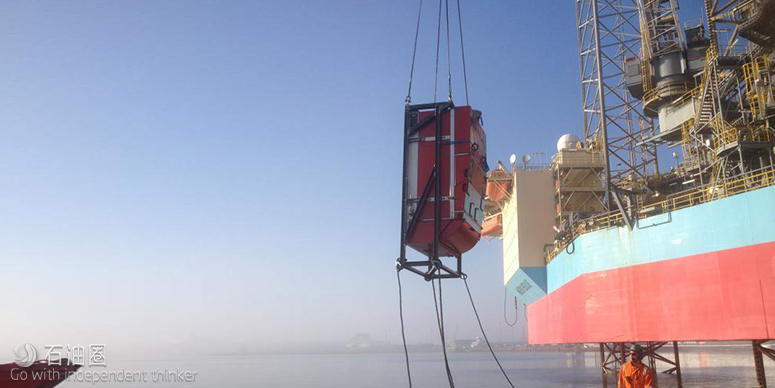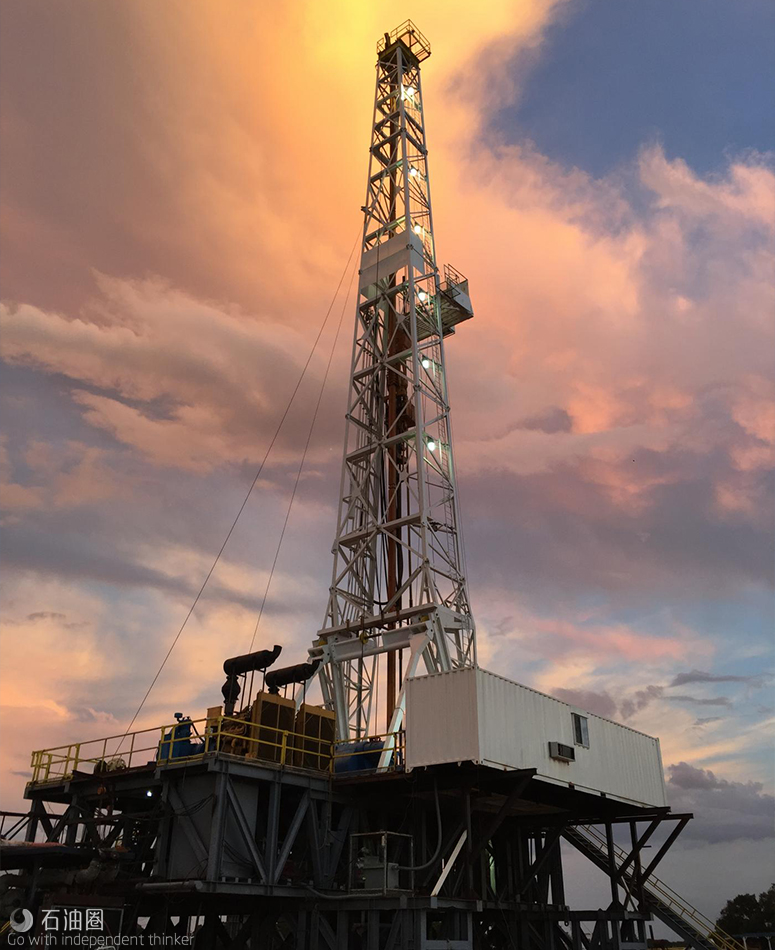Cubility’s MudCube is installed on an offshore rig. The system provides lower fluid consumption and reduced waste volumes.
With the current industry focus on increasing efficiencies, reducing costs and meeting ambitious production targets, the drilling fluids market remains one of the most buoyant in the upstream oil and gas industry. According to industry analysts Research and Markets, the global drilling fluids market is expected to be worth more than $10 billion by 2025, up from a valuation of $7.6 billion in 2016.
Drilling fluids have a crucial role to play in ongoing drilling operations—facilitating the drilling process by suspending cuttings, cooling and lubricating the drillbit, providing buoyancy and carrying drill cuttings to the surface.
Effective fluids also can lead to increased ROP, a reduction in equivalent circulating density and the ability to keep the cuttings in suspension when circulation is stopped, all vital to preventing cuttings from accumulating at the bottom of the hole leading to pipe sticking.
Yet, just as their importance to upstream operations has increased, so have the challenges that surround them.
New environmental guidelines
With the rise in borehole complexity, stringent waste discharge guidelines also emerged. Operators must balance drilling fluid efficiencies against the amount of cuttings created and their disposal and environmental impact. Such regulatory bodies include the OSPAR Commission in the U.K., which focuses on protecting the environment and resources of the northeast Atlantic through to the National Oceanic and Atmospheric Administration and Canadian Association of Petroleum Producers, which has strict guidelines for the disposal of waste drilling fluids and cuttings in North America.
There is also an economic case for reducing the amount of drilling fluids lost, with significant potential savings around waste disposal. On the Norwegian Continental Shelf (NCS), for example, the treatment and disposal of drilling waste is conservatively estimated at $1,580 to $1,750 per ton, with onshore costs for waste disposal also significant.
It is against this industry context that the quality of drilling fluids and cuttings and the accompanying amount of drilling waste represent major issues for operators.
Available technologies
For many years shale shakers have been the pre-eminent technology offshore and onshore for maintaining drilling fluids and the separation of solids. The vibration and high g-forces lead to solids being filtered out for discharge or treatment and the cleaned fluid then incorporated back into the system.
Yet, despite being used in the industry for decades, shale shakers are often in a way too efficient. They break down the drilled solids into extremely fine particles, but at the same time reduce the ability to remove them, thereby increasing solids content in the drilling fluids and reducing their efficiency.
Secondly, vibrating shale shakers often lead to high volumes of fluid being lost with large amounts of drilling waste—drilling fluids and cuttings—generated and less fluid able to be reused within the system.
It is an alternative to shale shakers that Cubility’s enclosed solids control system, the MudCube, has been effective in improving solids removal efficiencies, reducing the volume of drilling fluids lost, minimizing the tonnage of waste generated and raising drilling fluid integrity performance.
The system vacuums drilling fluids through a rotating filter belt—rather than relying on high g-forces—with a high airflow being used to separate the cuttings from the fluid. The cleaned drilling fluids are then returned to the fluid system and the drilled solids carried forward on the filter belt for discharge or removal.
The improved separation capabilities lead to better quality fluid and fewer chemicals required to maintain its properties as well as enhanced drilling efficiencies through stable fluid properties, higher ROP and reduced stuck-pipe incidents. The solids removal efficiencies also ensure that 80% more fluid is recovered than competing technologies—a substantial benefit when multiplied by about 200 rigs.
With more fluid recycled back to the fluid system, there is also reduced and “cleaner” waste to dispose of. The system generates substantially drier cuttings with fluid on cuttings being reduced to less than 30% of drilled solids and oil on cuttings as low as 5%. These drier cuttings and lower oil content mean that disposal is cheaper with less environmental requirements. Finally, for rig contractors, the system brings with it the benefits of leaner and more cost-effective rigs.
Offshore applications
There have been several recent MudCube applications in Europe and North America. One such example is on the deepest well ever drilled on the NCS. Three Mud- Cubes are in operation on the Maersk Gallant jackup drilling rig operated by Total E&P Norge, which in July 2016 drilled the Solaris ultra-HP/HT well to a true vertical depth of 5,941 m (19,491 ft).
Benefits to Total E&P Norge of the MudCubes’ use during drilling included improved drilling efficiencies with less drilling fluid being lost and more returned to the fluid tanks for reuse and the cuttings having a low fluid content made for easier and cheaper disposal.
Four MudCubes also are being installed on the Johan Sverdrup Field, where production startup is scheduled for year-end 2019. In this case, the MudCubes will provide the operator, Statoil, with drilling efficiencies, lower fluid consumption, reduced waste volumes and improved HSE. Noble Denton also is implementing the system on the North Sea.
The success of the MudCube offshore also is allowing Cubility to focus on R&D and explore ways to further accommodate the entire solids control cycle globally, with new technologies on offshore platforms that further reduce oil on cuttings and bring transportation benefits.
Onshore applications
Cubility’s system also provides onshore operators and drilling contractors with improved operational efficiencies, more efficient drilling fluids and reduced waste discharge. Recent applications were initiated in the Marcellus Shale. In this case, the operator tasked Cubility to find a more efficient way of processing and disposing of cuttings and reducing waste to the landfill.
In drilling applications in which large amounts of fines are not prevalent and cuttings can easily be lifted out of the wellbore (such as different formations, vertical wells, shorter to medium laterals or S-shaped wells), the MudCubes proved to be an effective solution in minimizing/eliminating backyard requirements and achieving top-tier solids control and waste disposal results. Cubility also is playing a role in taking the pressure off contractors who are faced with providing solids control equipment with little financial upside to them but maximum upside to the operator.
The MudCube supported the Catoosa testing facility in Tulsa, Okla. (Source: Cubility)
Through partnering with specialized service companies such as New Tech Solids in Canada and Stage 3 Separation in Houston, Cubility is enabling the cost-effective deployment of MudCubes—where an operator can rent the service per well or well pad—as part of a complete solids control solution in one of the world’s most cost-conscious markets. Cubility is expanding this relationship model to other major markets in the Middle East and Asia.
As the drilling fluids market continues to grow, it has never been more important to ensure that the right waste reduction and cuttings separation technologies as well as the right business models are in place. The result will be greater efficiencies, reduced costs and environmental compliance across the drilling process.

 石油圈
石油圈

